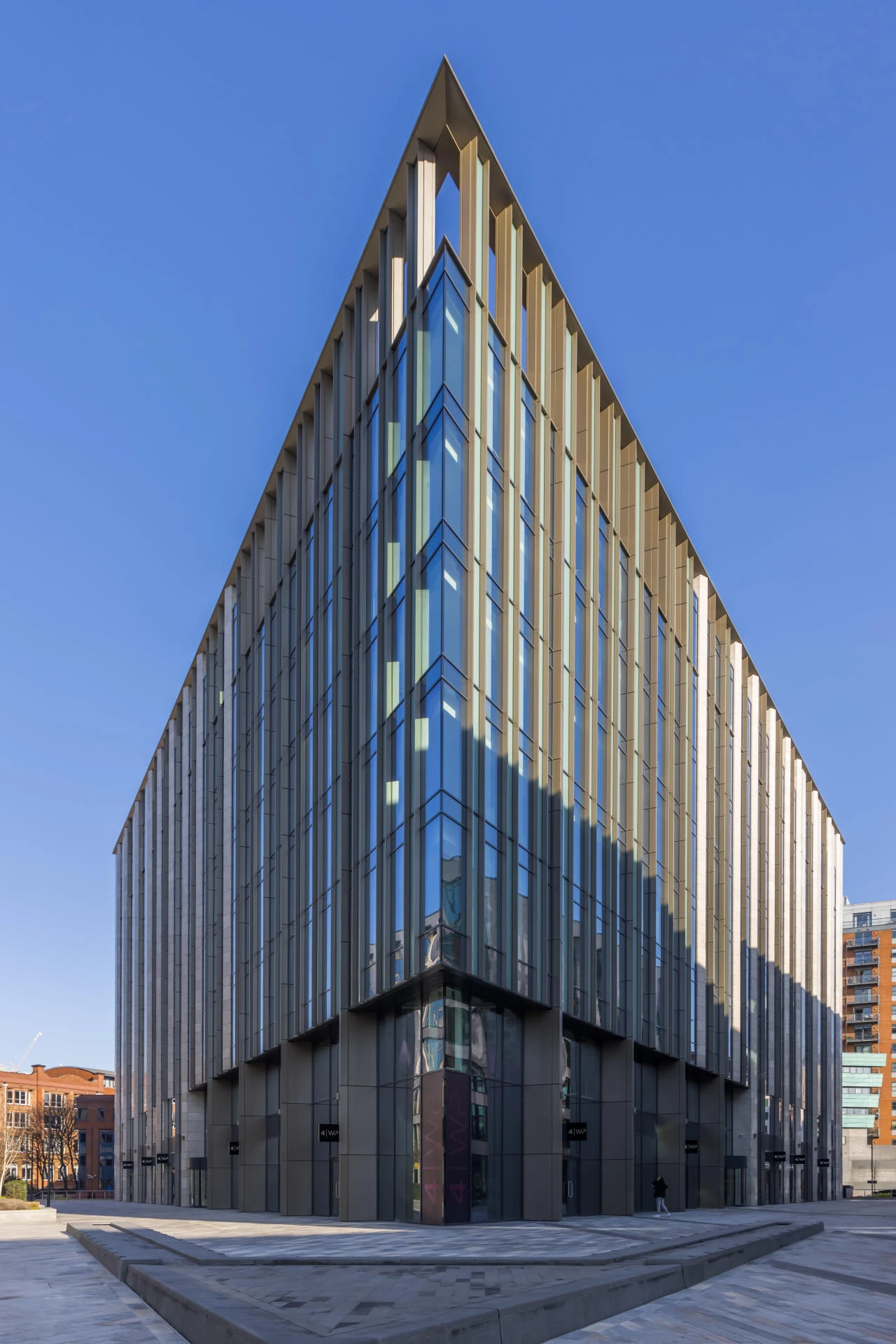Environmental Aspects of Aluminium Joinery – Current Challenges and Development Directions

The National Robotarium, Edinburgh, United Kingdom. Systems used: MB-86 ST, MB-SR50N, MB-SR50N EFEKT
Modern Construction and Environmental Protection
The construction industry significantly impacts climate change on our planet. Besides using photovoltaic technology and wind farms for energy production, green building currently employs various other interesting solutions aimed at making new buildings more eco-friendly without compromising on functionality. The use of aluminium joinery significantly contributes to this effort.

4 Wellington Place, Leeds, United Kingdom. Systems used: MB-SR60N, MB-86 FOLD LINE, MB-77HS
Aluminium Windows and Doors in Sustainable Construction
Aluminium joinery uses one of the most superior materials available on our planet – aluminium. This material is fascinating in terms of ecological benefits, outpacing wooden joinery and PVC windows and doors.
The greatest advantage of aluminium is its almost unlimited recyclability, providing significant energy savings. Essentially, it can be recycled indefinitely without losing its properties. This is a substantial benefit compared to alternative door and window manufacturing methods. For example, PVC has very limited recycling potential, eventually becoming unsuitable for use and contributing to waste problems.
Aluminium boasts several properties that make it excellent for manufacturing frames for doors, windows, and façades. It is renowned for its:
- durability,
- lightness,
- aesthetics,
- weather resistance.
Among companies utilizing aluminium is Aluprof, which focuses not only on delivering top-quality systems for windows, doors, and façades globally. Their product range includes solutions tailored to specific building applications. An example is the MB-86 Fold Line HD aluminium system for bifold doors, enabling wide-open transitions between a building’s interior and its immediate exterior surroundings.
Another innovative solution is the MB-79N aluminium window and door system, characterized by enhanced thermal insulation, allowing for optimal indoor conditions regardless of outside weather and temperatures.
Aluprof window and door systems meet rigorous standards imposed by the construction industry for low-emission building products. This ensures that the edifices constructed will serve future generations, not only with functionality but also with marginal (or completely neutral) environmental impact.

Wullnerstrasse Apartment, Cologne, Germany. Systems used: MB-77HS, MB-86 SI, MB-TT50
Let’s Build a Better Future
Choosing aluminium for constructing window, door, and façade frames allows this material to be subsequently used in future projects practically without loss and, as research shows, saving up to 95% of energy in the reprocessing stage compared to producing primary aluminium.
